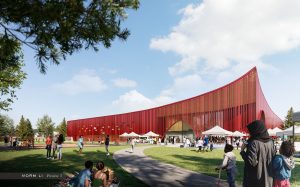The Greater Toronto Area (GTA) is plagued by “transit deserts,” pockets in Scarborough, Etobicoke and elsewhere where numerous low-income citizens are unable to participate equitably in city activities because of poor access, delegates attending a recent Toronto transportation conference were told.
It’s a problem exacerbated by the province’s major infrastructure gap and by the fact that transit planners and politicians do not have adequate standards to follow as they make decisions to spend billions of taxpayer dollars on new projects.
So says Steven Farber, an assistant professor in the Department of Human Geography at the University of Toronto, who identified significant policy gaps during a presentation at a Transport Futures event.
The conference, held Dec. 9, was billed as a Transportation Equity Summit.
“It is very concerning that essentially at no level of government is there strict policy guidance on how infrastructure money should be spent in an equitable way,” said Farber in an interview.
He was responding to a question asking to what extent he figured equity policy would play a role in rolling out the $28.5 billion in new GTA transit spending announced by the Ontario government last April including the new Ontario Line that is being fast-tracked.
“I am pleased there is $28 billion being slated for infrastructure but it is quite shocking and scary that that is not coming with any guidance on what should be considered and unfortunately they are doing the planning without any analysis.
“The way that these funding decisions get made is very backwards.”

Farber is a leading international scholar and serves as chair of the Social and Economic Factors Committee of the Transportation Research Board, one of the U.S. National Academies of Science. The topic of transport equity has increasingly attracted attention in the past three years with scholarship crystalized by the 2017 book titled Transport Justice by Karel Martens.
Farber defined transportation equity as the fairness of the distribution of costs and benefits of the transportation system. The focus of transportation planning has been expanding in recent times, he said, to include network efficiency, moving freight, urban development, economic productivity, big data, smart mobility, pollution, health and the climate crisis — and tending to ignore how projects serve people.
“There is something missing,” Farber said.
“Enabling the freedom to participate in the activities of daily life” is a fundamental purpose of a transportation system, he added.
Farber suggested that some of the projects currently being considered in the GTA will have positive impacts on transport-poor communities, “but it is probably more luck than foresight, and without (equity) regulations in place we will get unlucky just as much as we get lucky.”
The TTC has done a better job of serving most of its population base than other satellite transit providers have, he said.
“Given the fact there are very few standards in place to ensure standards are met, I think they have done very well in a lot of parts of the region,” he said of Toronto transit providers. “I think the TTC and the City of Toronto historically has emphasized coverage of the transit network and provided good access to almost everyone.
“It is not the case when you cross that municipal border in a lot of directions. There is still a lot of catch-up to be done.”
Commenting on the effects of the infrastructure gap, given that for decades there was little investment by governments in infrastructure, Farber said, “I think it’s a huge problem. I think if you talk about housing and land-use planning together, the fact that transit-serviced areas are so highly coveted is because we don’t have a lot of them, they are a scarce resource. A neighbourhood that’s on the subway line is a scarce resource, which makes a huge affordability issue with land around a subway.”
Farber called for much more research on the topic including the development of business-case analysis of how equity should be valued and how trip generation should be valued. There is minimal national data available on automobile ownership, barriers to transit and suppressed activity participation rates.
“We need more pilots to build evidence and support good ideas, and ignore bad ones,” Farber said.
Follow the author on Twitter @DonWall_DCN.







Recent Comments
comments for this post are closed